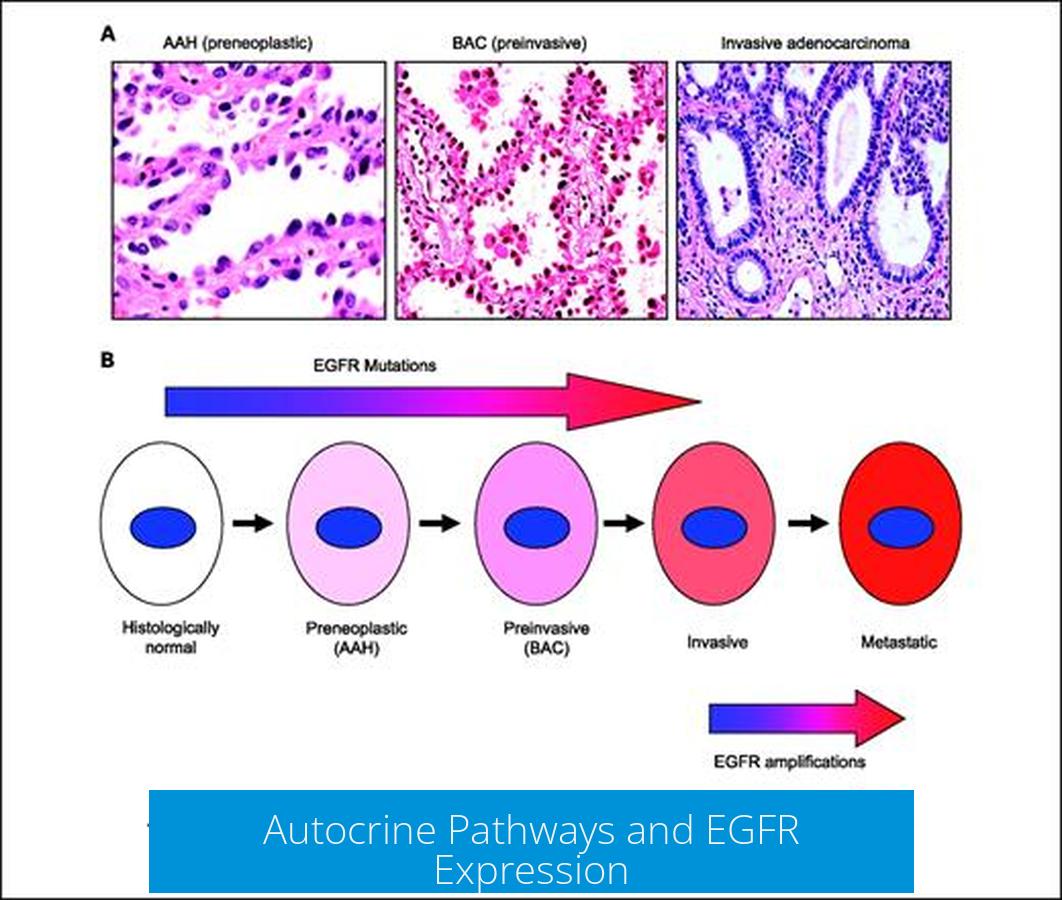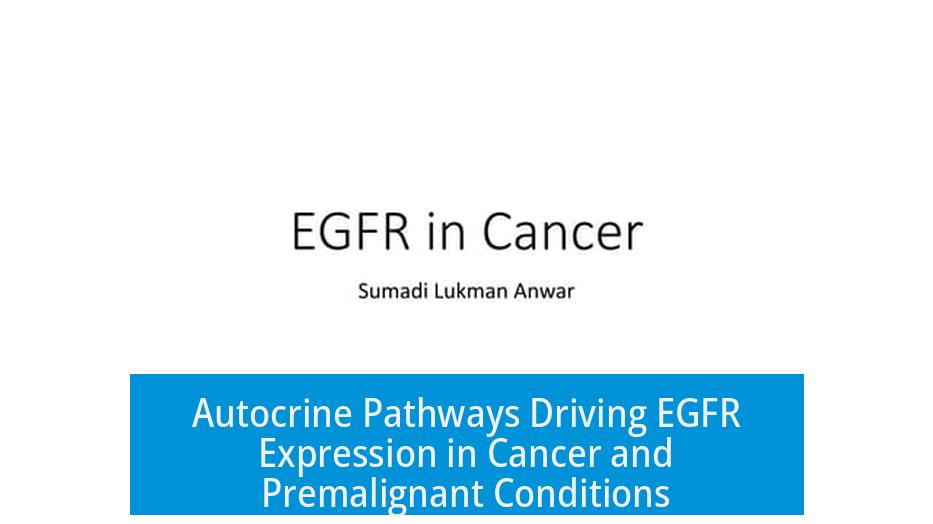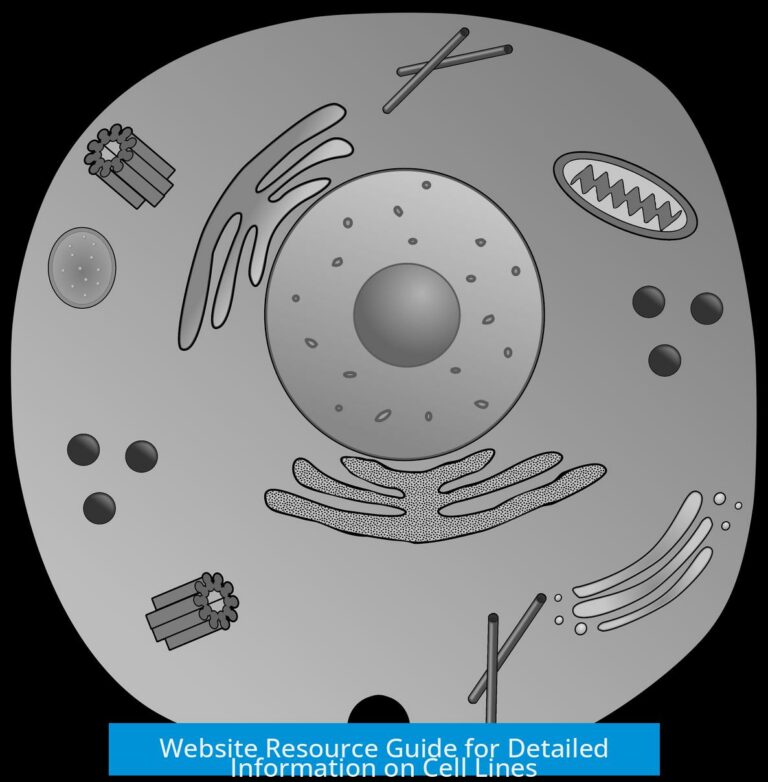Autocrine Pathways and EGFR Expression

Autocrine signaling can contribute to EGFR expression by enabling a cell to produce EGF ligands that stimulate its own EGFR receptors, thereby promoting proliferation. This mechanism involves the cell releasing epidermal growth factor (EGF), which binds to the epidermal growth factor receptor (EGFR) on the same cell.
Understanding Autocrine Signaling in EGFR Regulation
Autocrine signaling specifically refers to a cell signaling itself through molecules it secretes. In the context of EGFR, if a cell produces EGF and simultaneously expresses EGFR, it can stimulate its own growth and division without involving hormones or external signals.
This form of self-stimulation differs from paracrine or endocrine signaling because the effector molecules act locally on the same cell or its immediate neighbors.
Autocrine Pathways in Premalignant and Malignant States
Autocrine EGFR signaling is more commonly implicated in malignant states rather than premalignant conditions like plexiform neurofibroma (PNF).
- PNF, often associated with NF1 mutations, progresses through Ras activation independent of EGF binding.
- NF1 mutations keep Ras constitutively active, bypassing the need for autocrine EGF stimulation of EGFR.
This suggests autocrine signaling is less likely the main driver of EGFR expression in NF1-related PNF pathology.
EGFR Overexpression in Cancer and Its Genetic Basis
EGFR overexpression and abnormal EGF signaling do occur in certain cancers, such as breast cancer, where autocrine or paracrine mechanisms may enhance tumor growth.
However, in non-NF1 PNF or similar premalignant conditions, EGFR pathway activation often relates to genetic mutations affecting pathway components directly rather than autocrine ligand stimulation.
Investigations focus on mutations within the EGFR gene or downstream signaling partners. These genetic changes may increase EGFR expression or activity, independent of autocrine signaling.
Key Takeaways
- Autocrine pathways can stimulate EGFR expression by self-production of EGF and receptor activation.
- Autocrine EGFR signaling mainly contributes to proliferation in malignant rather than premalignant states.
- NF1 mutations activate Ras independently, reducing reliance on autocrine EGF in PNF.
- EGFR overexpression in some cancers is linked more to genetic mutations than to autocrine signaling.
- Research into EGFR pathway mutations helps clarify mechanisms behind EGFR activity beyond autocrine routes.
Is there an autocrine pathway that contributes to EGFR expression in cells?
Autocrine signaling involves a cell producing EGF and expressing EGFR, allowing it to stimulate its own growth. This signaling affects cell behavior but is more about activation than increasing EGFR expression itself.
Does autocrine signaling play a role in EGFR expression in premalignant plexiform neurofibromas (PNF)?
Autocrine signaling tends to occur in malignant conditions rather than premalignant PNF. In PNF, Ras activation is often independent of EGF signaling due to NF1 mutations, so autocrine pathways are less likely to drive EGFR expression there.
Could EGFR overexpression in cancers be linked to autocrine EGF signaling?
Some cancers show EGFR overexpression tied to active EGF signaling. However, in non-NF1 PNF cases, EGF overexpression is less clear, indicating autocrine EGF signaling might not be the main driver of EGFR expression in those settings.
How might genetic mutations influence EGFR pathway activation apart from autocrine signaling?
Mutations in EGFR or related pathway genes can cause abnormal pathway activation. This internal genetic change often drives expression and activity, rather than external autocrine signaling mechanisms.
Why is studying genetics important for understanding EGFR expression and activation?
Cancer and premalignant states are linked to genetic changes. Examining these mutations, especially within the EGFR pathway, helps clarify how EGFR expression is regulated beyond autocrine signals.





Leave a Comment